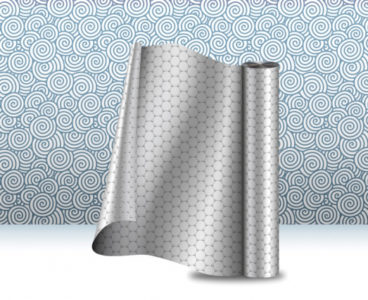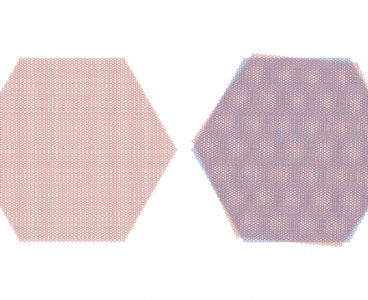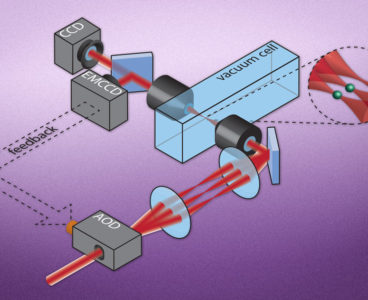The next time you set a kettle to boil, consider this scenario: After turning the burner off, instead of staying hot and slowly warming the surrounding kitchen and stove, the kettle quickly cools to room temperature and its heat hurtles away in the form of a boiling-hot wave. We know heat doesn’t behave this way…
Ingestible Monitoring Pill Swells to Size of Ping Pong Ball
MIT engineers have designed an ingestible, Jell-O-like pill that, upon reaching the stomach, quickly swells to the size of a soft, squishy ping-pong ball big enough to stay in the stomach for an extended period of time. The inflatable pill is embedded with a sensor that continuously tracks the stomach’s temperature for up to 30…
Satellites Use Laser-pointing System to Transmit Data to Earth
A new laser-pointing platform developed at MIT may help launch miniature satellites into the high-rate data game. Since 1998, almost 2,000 shoebox-sized satellites known as CubeSats have been launched into space. Due to their petite frame and the fact that they can be made from off-the-shelf parts, CubeSats are significantly more affordable to build and…
Laser Technology Functions as Earth’s ‘Porch Light’
If extraterrestrial intelligence exists somewhere in our galaxy, a new MIT study proposes that laser technology on Earth could, in principle, be fashioned into something of a planetary porch light — a beacon strong enough to attract attention from as far as 20,000 light years away. The research, which author James Clark calls a “feasibility…
Stamp-sized, Holey Graphene Sheets Benefit Molecular Separation
MIT engineers have found a way to directly “pinprick” microscopic holes into graphene as the material is grown in the lab. With this technique, they have fabricated relatively large sheets of graphene (“large,” meaning roughly the size of a postage stamp), with pores that could make filtering certain molecules out of solutions vastly more efficient.…
Software Finds the Best Way to Stick a Mars Landing
Selecting a landing site for a rover headed to Mars is a lengthy process that normally involves large committees of scientists and engineers. These committees typically spend several years weighing a mission’s science objectives against a vehicle’s engineering constraints, to identify sites that are both scientifically interesting and safe to land on. For instance, a…
Graphene Rolls Out to Make Manufacturing Process Better
MIT engineers have developed a continuous manufacturing process that produces long strips of high-quality graphene. The team’s results are the first demonstration of an industrial, scalable method for manufacturing high-quality graphene that is tailored for use in membranes that filter a variety of molecules, including salts, larger ions, proteins, or nanoparticles. Such membranes should be…
Insulator or Superconductor? Physicists Find Graphene is Both
It’s hard to believe that a single material can be described by as many superlatives as graphene can. Since its discovery in 2004, scientists have found that the lacy, honeycomb-like sheet of carbon atoms — essentially the most microscopic shaving of pencil lead you can imagine — is not just the thinnest material known in…
Graphene Pulls Double Duty as Insulator and Superconductor
It’s hard to believe that a single material can be described by as many superlatives as graphene can. Since its discovery in 2004, scientists have found that the lacy, honeycomb-like sheet of carbon atoms — essentially the most microscopic shaving of pencil lead you can imagine — is not just the thinnest material known in…
Physicists Develop a $100 Handheld Particle Detector
At any given moment, the Earth’s atmosphere is showered with high-energy cosmic rays that have been blasted from supernovae and other astrophysical phenomena far beyond the Solar System. When cosmic rays collide with the Earth’s atmosphere, they decay into muons — charged particles that are slightly heavier than an electron. Muons last only fractions of…
Graphene-Superconductor Sandwich Adopts Exotic Electronic States
In normal conductive materials such as silver and copper, electric current flows with varying degrees of resistance, in the form of individual electrons that ping-pong off defects, dissipating energy as they go. Superconductors, by contrast, are so named for their remarkable ability to conduct electricity without resistance, by means of electrons that pair up and…
Engineers Design ‘Tree-On-A-Chip’
Trees and other plants, from towering redwoods to diminutive daisies, are nature’s hydraulic pumps. They are constantly pulling water up from their roots to the topmost leaves, and pumping sugars produced by their leaves back down to the roots. This constant stream of nutrients is shuttled through a system of tissues called xylem and phloem,…
Scientists Set Traps for Atoms with Single-Particle Precision
Atoms, photons, and other quantum particles are often capricious and finicky by nature; very rarely at a standstill, they often collide with others of their kind. But if such particles can be individually corralled and controlled in large numbers, they may be harnessed as quantum bits, or qubits — tiny units of information whose state…
Laser Particles Offer Sharper Tissue Images
A new imaging technique developed by scientists at MIT, Harvard University, and Massachusetts General Hospital (MGH) aims to illuminate cellular structures in deep tissue and other dense and opaque materials. Their method uses tiny particles embedded in the material, that give off laser light. The team synthesized these “laser particles” in the shape of tiny…














